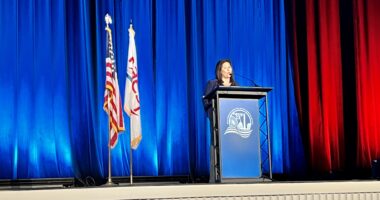Empowering LGBTQIA+ Students Through Inclusive Education
Schools can use these strategies—complete with 11 NAESP resources—to create environments where every student feels safe, valued, and empowered to be their authentic selves.

Schools play a pivotal role in shaping the experiences of all students, including those who identify as LGBTQIA+. Educators and administrators have a responsibility to create environments where every student feels safe, valued, and empowered to be their authentic selves. Here are some strategies schools can use to become beacons of support for LGBTQIA+ students, backed by research and expert insights.
The Power of Inclusive Policies
Imagine walking into a school where your identity is not just acknowledged but celebrated. This is the transformative effect of inclusive policies. According to the GLSEN 2019 National School Climate Survey, LGBTQIA+ students in schools with comprehensive policies report feeling significantly safer and experiencing less victimization compared to those in schools without such policies.
NAESP Resources: 5 Tips for Gender Inclusion and Regressive Policies Impact LGBTQ Kids’ Mental Health
Curriculum as a Window and Mirror
Think of curriculum as both a window to new perspectives and a mirror reflecting students’ own experiences. Incorporating LGBTQIA+ history, literature, and contributions across subjects not only educates all students but also validates the identities of LGBTQIA+ youth.
A study published in the Journal of LGBT Youth found that students in schools with LGBTQIA+-inclusive curricula reported feeling more connected to their school community and had higher academic achievement rates.
NAESP Resources: Representative Texts for Young Leaners and A Lens That Reflects
Safe Spaces and Support Groups
The goal is to create an environment where students can be entirely themselves without fear of judgment. This is the essence of GSAs (Gender and Sexuality Alliances) or similar support groups. The Trevor Project’s research indicates that LGBTQIA+ youth who have access to spaces that affirm their sexual orientation and gender identity report lower rates of attempting suicide.
NAESP Resource: Balancing Physical Security With Emotional Safety in Schools
Recognizing Intersectionality
Understanding compounded issues related to intersectionality is crucial when considering the experiences of LGBTQIA+ students. These young people don’t just navigate their sexual orientation or gender identity; they also contend with other aspects of their identities such as race, ethnicity, socioeconomic status, and disability.
Research from the National LGBTQ Task Force highlights that LGBTQIA+ students of color often face compounded challenges, experiencing both homophobia and racism. Schools must recognize and address these intersecting identities to provide truly comprehensive support. This approach ensures that all LGBTQIA+ students, regardless of their multiple identities, feel seen, understood, and supported in their educational journey.
NAESP Resources: Advocating for Intersectional Inclusion and Intersectionality: Diversity, Equity, Inclusion, and Belongingness
Professional Learning to Empower Educators
To meet these needs, teachers must be equipped with the knowledge and skills to effectively support LGBTQIA+ students. This is the power of targeted professional development. The Center for American Progress reports that educators who receive LGBTQIA+-specific training are more likely to intervene in bullying situations and create more inclusive classroom environments.
NAESP Resources: Demystify DEI for New Teachers and Explicit Teaching Is a Tool for Equity
The Role of Counseling Services
LGBTQIA+ students often face unique mental health challenges based on an increased risk of experiencing shame, fear, discrimination, and traumatic events. The American School Counselor Association emphasizes the critical role of counselors in providing affirming support and resources to LGBTQIA+ students. A school counselor’s office should serve as a sanctuary of understanding and support.
Schools who don’t have an onsite counselor can work with community mental health organizations for support. Trusted adults in the building can be a safe haven for students, too.
NAESP Resources: Build Supports for the Whole Child and What Does It Mean to Be a Trusted Adult?
A Vision of Belonging
Creating safe and welcoming spaces for LGBTQIA+ students is not just about policies or programs; it’s about fostering a culture of belonging. Educators have the power to shape school environments where every student can thrive, regardless of their sexual orientation or gender identity.
Every step toward inclusivity, no matter how small, can make a world of difference in a student’s life. Commit to making your school a place where every student can say, “I belong here.”
Krysia Gabenski is editorial director at NAESP.




